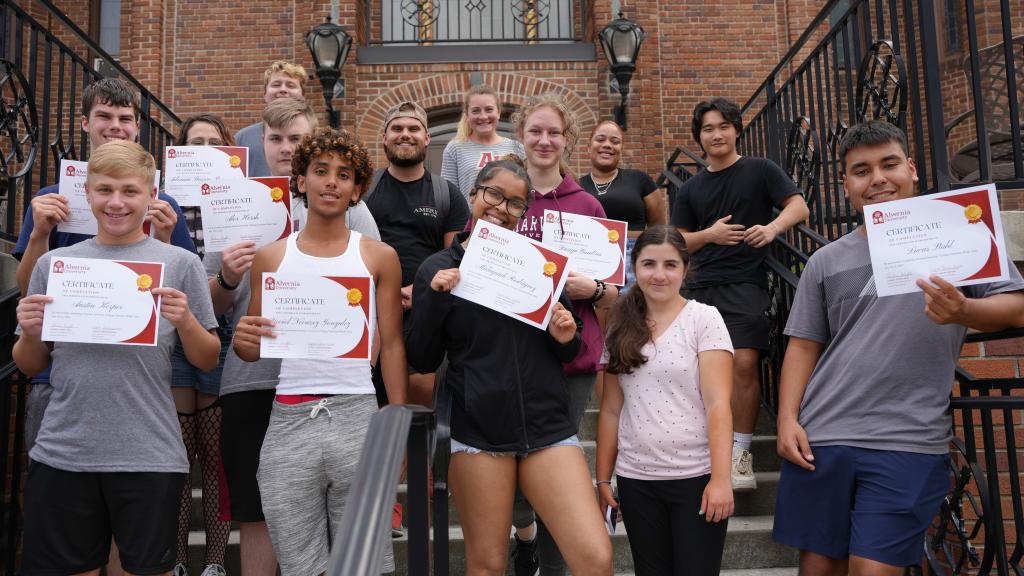GPT-3 can cause about in addition to a university pupil, psychologists report_ However does the expertise mimic human reasoning or is it utilizing a essentially new cognitive process_
Individuals resolve new issues readily with none particular coaching or apply by evaluating them to acquainted issues and lengthening the answer to the brand new downside. That course of, often called analogical reasoning, has lengthy been regarded as a uniquely human skill.
However now individuals may need to make room for a brand new child on the block.
Analysis by UCLA psychologists reveals that, astonishingly, the substitute intelligence language mannequin GPT-3 performs about in addition to faculty undergraduates when requested to resolve the kind of reasoning issues that usually seem on intelligence assessments and standardized assessments such because the SAT. The examine is revealed in Nature Human Behaviour.
However the paper’s authors write that the examine raises the query: Is GPT-3 mimicking human reasoning as a byproduct of its large language coaching dataset or it’s utilizing a essentially new sort of cognitive course of?
With out entry to GPT-3’s interior workings — that are guarded by OpenAI, the corporate that created it — the UCLA scientists cannot say for certain how its reasoning skills work. Additionally they write that though GPT-3 performs much better than they anticipated at some reasoning duties, the favored AI device nonetheless fails spectacularly at others.
“Irrespective of how spectacular our outcomes, it is necessary to emphasise that this technique has main limitations,” mentioned Taylor Webb, a UCLA postdoctoral researcher in psychology and the examine’s first writer. “It will possibly do analogical reasoning, however it might’t do issues which can be very simple for individuals, comparable to utilizing instruments to resolve a bodily process. After we gave it these types of issues — a few of which youngsters can resolve shortly — the issues it urged have been nonsensical.”
Webb and his colleagues examined GPT-3’s skill to resolve a set of issues impressed by a take a look at often called Raven’s Progressive Matrices, which ask the topic to foretell the following picture in an advanced association of shapes. To allow GPT-3 to “see,” the shapes, Webb transformed the photographs to a textual content format that GPT-3 may course of; that strategy additionally assured that the AI would by no means have encountered the questions earlier than.
commercial
The researchers requested 40 UCLA undergraduate college students to resolve the identical issues.
“Surprisingly, not solely did GPT-3 do about in addition to people but it surely made comparable errors as properly,” mentioned UCLA psychology professor Hongjing Lu, the examine’s senior writer.
GPT-3 solved 80% of the issues accurately — properly above the human topics’ common rating of slightly below 60%, however properly throughout the vary of the very best human scores.
The researchers additionally prompted GPT-3 to resolve a set of SAT analogy questions that they consider had by no means been revealed on the web — that means that the questions would have been unlikely to have been part of GPT-3’s coaching information. The questions ask customers to pick pairs of phrases that share the identical kind of relationships. (For instance, in the issue “‘Love’ is to ‘hate’ as ‘wealthy’ is to which phrase?,” the answer could be “poor.”)
They in contrast GPT-3’s scores to revealed outcomes of faculty candidates’ SAT scores and located that the AI carried out higher than the typical rating for the people.
The researchers then requested GPT-3 and pupil volunteers to resolve analogies primarily based on brief tales — prompting them to learn one passage after which establish a special story that conveyed the identical that means. The expertise did much less properly than college students on these issues, though GPT-4, the newest iteration of OpenAI’s expertise, carried out higher than GPT-3.
commercial
The UCLA researchers have developed their very own pc mannequin, which is impressed by human cognition, and have been evaluating its skills to these of business AI.
“AI was getting higher, however our psychological AI mannequin was nonetheless the very best at doing analogy issues till final December when Taylor acquired the newest improve of GPT-3, and it was pretty much as good or higher,” mentioned UCLA psychology professor Keith Holyoak, a co-author of the examine.
The researchers mentioned GPT-3 has been unable up to now to resolve issues that require understanding bodily house. For instance, if supplied with descriptions of a set of instruments — say, a cardboard tube, scissors and tape — that it may use to switch gumballs from one bowl to a different, GPT-3 proposed weird options.
“Language studying fashions are simply attempting to do phrase prediction so we’re stunned they’ll do reasoning,” Lu mentioned. “Over the previous two years, the expertise has taken a giant bounce from its earlier incarnations.”
The UCLA scientists hope to discover whether or not language studying fashions are literally starting to “suppose” like people or are doing one thing fully completely different that merely mimics human thought.
“GPT-3 may be sort of considering like a human,” Holyoak mentioned. “However then again, individuals didn’t study by ingesting the complete web, so the coaching methodology is totally completely different. We would wish to know if it is actually doing it the way in which individuals do, or if it is one thing model new — an actual synthetic intelligence –which could be superb in its personal proper.”
To search out out, they would want to find out the underlying cognitive processes AI fashions are utilizing, which might require entry to the software program and to the info used to coach the software program — after which administering assessments that they’re certain the software program hasn’t already been given. That, they mentioned, could be the following step in deciding what AI should turn out to be.
“It will be very helpful for AI and cognitive researchers to have the backend to GPT fashions,” Webb mentioned. “We’re simply doing inputs and getting outputs and it is not as decisive as we might prefer it to be.”




